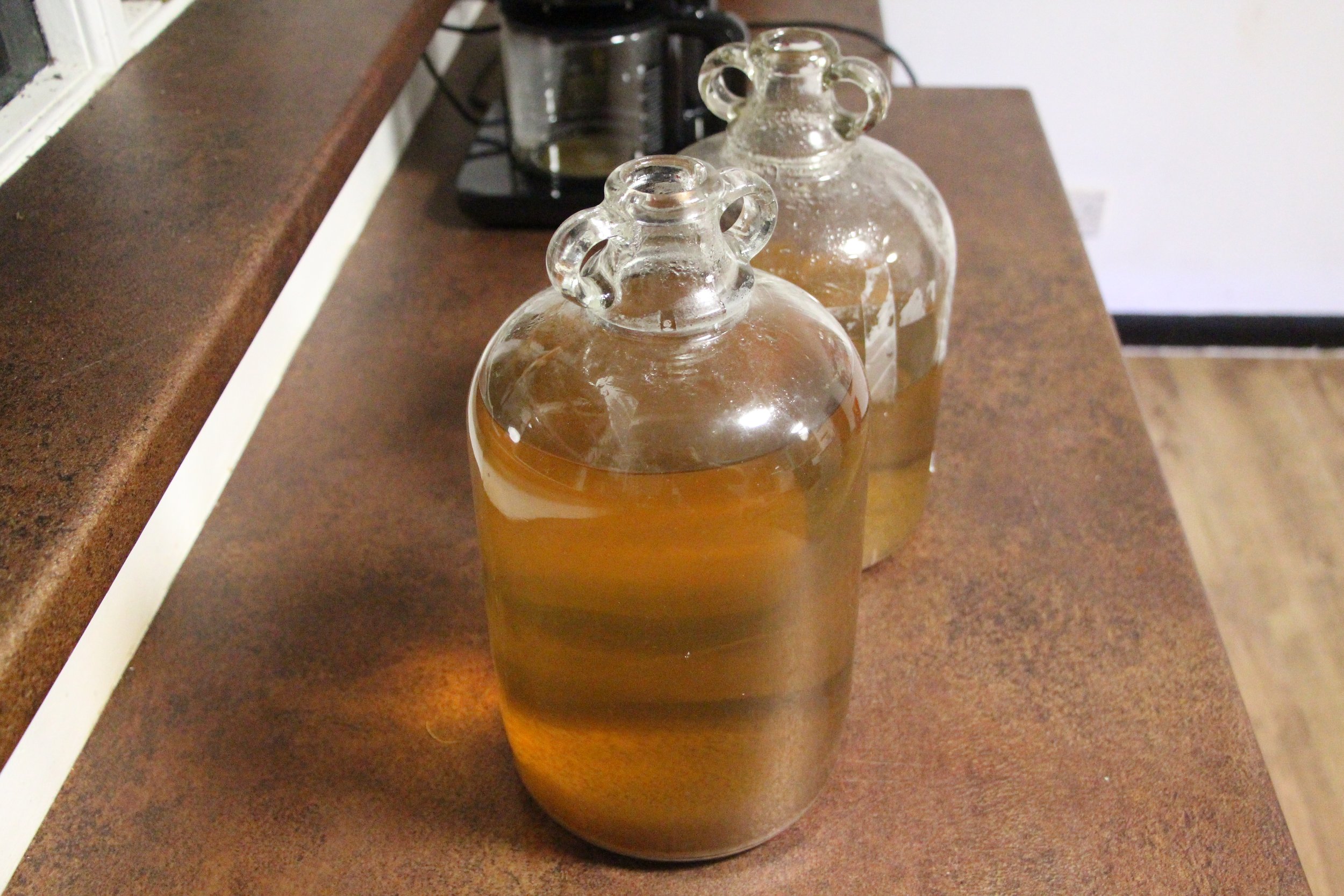Having experimented with brewing beer over the last couple of years I’ve had a keen interest in the changing seasons and seeing what is available to forage, wild garlic, mushrooms, blackberries, hops, hazelnuts, sloes, I have a book that my mother gave me with all sorts of recipes that date back to the 1950’s, and I’ve experimented with wild hop beer, Sloe Gin and now Elderflower wine, the brewery setup I had for beer brewing was on a commercial level and as a hobbyist was never really practical, whilst enjoyable, the space and time and resources it took were never going to be able to be kept, so more small batch fermentations are keeping me busy year round.
First published in 1955, this book has anything and everything available fruit and veg wise to be fermented and is a great go to guide for anything out of the garden or in the wilderness.


Months in the making, the Elder flowers were picked in Wissington and Gt Wratting, two great places to forage, however Elderflower in abundance in most hedgerows and wooded areas in the Summer months. Early June the Elderflower start to flower, we picked a couple of bags in late June, not too early nor too late, the smell of summer is in the air when elderflower are in full flow, it cant be mistaken both for colour and for smell, the recipe is fairly straight forward, there are many available on google but this is what I used from the book:
· 24 Elderflower heads
· 1.2kg of Sugar
· 4 litres of Water
· 1 Campden tablet
· 1 Lemon
· 1 tsp Yeast Nutrient
· 1/4 tsp Wine Tannin
· 1 Sachet of Wine Yeast
1. Grate the zest from the lemon , and add this to the sanitised fermenting bucket, then add the elder flower.
2. Boil 4 litres of water and add the sugar to dissolve, pour over the flowers zest. Allow to cool and add the Campden tablet, yeast nutrient and tannin, mix and leave for 24 hours.
3. After 24 hours pitch the yeast into the fermenter, allowing the wine to ferment for at least a week the yeast activity should slow over this period.
4. After the fermentation activity, transfer the wine through a straining bag into a sanitised demijohn.
5. Let the Elderflower wine complete fermentation and condition in the demijohn for at least a 2 – 3 months before racking and bottling.
(As I picked so many Elder flower heads I doubled up on the recipe as I had picked so many elderflower heads)
Full video below
